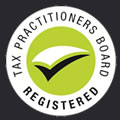You can now use your super to save for a deposit on a home and potentially save some money – by using the First Home Saver Super Scheme (FHSSS).
This blog post by Matthew Reid, Senior Accountant at i2 advisory gives an introduction and example of using the FHSSS.
Welcome to our first i2 advisory blog starting this 2018 year. We will be looking to roll out these informal and light-reading blogs on a regular basis to share tips and insights into a number of matters that may impact your business, personal/family finances and potential tax savings.
For many of us millennials, this new year (apart from starting a bit hazy) may have begun with some fresh new goals in mind for the year ahead. If, like me, the goal to knuckle down and save for that all important home deposit is on your to-do list (of perhaps you’re a parent who wants to enjoy an emptier nest), then this will hopefully take you in the right direction! The thought of saving up for a first home, at least to me, can be quite intimidating. Prioritising home deposit saving over spending can be a difficult mind shift, especially when the lure of overseas travel or a better car is always in the background. In addition, media speculation about the trend that the housing market is getting further and further out of reach and conjecture over what interest rates will do adds to the confusion and anxiety about when and how to break into the market. Fortunately, there has recently been some relief for us ‘young ones’ hoping to break out and possibly get into home ownership sooner, and it doesn’t have to involve 24 hour monitoring of the cryptocurrency movement.
Being in the accounting and tax world (and all the excitement it brings), I have had quite an introduction to the First Home Saver Super Scheme (FHSSS), but I honestly don’t know how much the general public is actually aware of it. I will attempt to ‘water down’ the technicalities of it here, but the basis of this scheme is to allow people saving for their first home to voluntarily contribute their money into their superannuation fund to save for a first home deposit. What benefit does that create I hear you ask? Well, as superannuation is typically taxed at a lower average rate (typically 15%) than the marginal tax rates in an individual’s name (up to 45% plus Medicare Levy), there is the potential to get a greater boost to your home deposit by way of accessing the lower tax rate. (I will give an example below to break this down).
With this scheme, there are also restrictions, some of the most relevant being:-
- You must not have previously owned property in Australia (unless the Commissioner determines financial hardship as per the regulations)
- The property being purchased is deemed eligible property (e.g. it cannot be a houseboat or vacant land)
- Your fund has previously not released FHSS funds
- You intend to live in the property as soon as practicable, and you intend to live in it for at least 6 months of the first 12 months you own it after you have moved in
- Maximum of $15,000 can be contributed each year – either concessional or non-concessional or a combination
- Maximum of $30,000 can be used for this scheme (allowing for $60,000 for couples)
- When contributions are withdrawn, they will be subject to tax at your marginal tax rate, but a 30% offset is applied. There are limitations on the amounts that can be withdrawn as well as the timing between the release of funds and having to purchase eligible property (important to know!)
- Contributions must be made voluntarily (most favoured by salary sacrificing or making tax deductible concessional contributions) –compulsory super guarantee contributions made by employers (normally 9.5%) can’t be used as contributions for this scheme
- Withdrawable amounts include contributions made via the scheme, plus an amount that represents ‘deemed earnings’ (current set at 3% plus current bank bill rate = 4.78%)
You will also need to check that your super fund is one which allows the release of funds under this scheme, as some funds may not allow this. You will also need to check if the fund will apply any fees and charges, or whether there are any other implications, to apply this scheme.
To help all that info come together, here is an example of using the FHSSS verses a term deposit-
- Jerry and his fiancé Elaine both currently earn $60,000 per year and are saving towards their first home, they have never owned Australian Real Property and are over 18 years of age.
- Jerry has decided to salary sacrifice $15,000 this year as voluntary super contributions and Elaine has chosen to deposit $15,000 into a term deposit, their tax outcomes (without factoring earnings or the tax on the respective asset earnings) would vary as follows:
| Jerry (First Home Super Saver) | Elaine (Term Deposit) | |
| Salary Income | $45,000 | $60,000 |
| Tax at individual rates (exc. Medicare Levy) | ($5,847) | ($10,947) |
| Less: Medicare Levy | ($900) | ($1,200) |
| NET EXPENDABLE INCOME
|
$38,253 | $47,853 |
| FHSSS Contributions to Super (Salary Sacrificed) | $15,000 | $0 |
| Tax on Super Contributions (15%) | ($2,250) | $0 |
| NET FHSSS CONTRIBUTIONS | $12,750* | $0 |
| TOTAL ASSETS
|
$51,003 | $47,853 |
| Net Tax Benefit (2018 Year) | $3,150 |
*Please note salary sacrificed superannuation contributions towards this scheme will likely be treated as ‘reportable employer superannuation contributions’.
Looking past my not-so-cryptic Seinfeld reference in this example, the tax savings that can be enjoyed by home deposit savers can be quite valuable.
On a closing note, one more benefit that is not quite intended, but I think is useful too, is that the money you salary sacrifice never hits your bank account. Therefore, you can’t be tempted to splurge that cash you wanted to save and you have the peace of mind that any leftovers savings can be used for that sneaky trip to Hawaii next sale time!
If you have any further queries about the First Home Super Saver Scheme or any other accounting/tax matters you may wish to discuss, you can get in touch with me via mreid@nulli2advisory.com.au.





